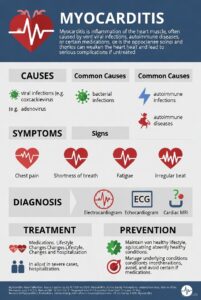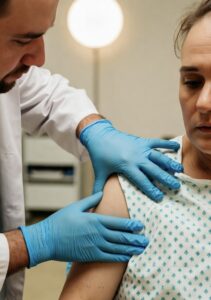-
-
- Subcutaneous and intradermal administration
- Give anywhere there is adequate subcutaneous tissue.
- Common sites are the lateral aspect of the upper arm, abdomen, and anterior thigh
- Inject volumes of less than 0.5 ml
- Use a 1ml syringe with a 26-to-30- gauge needle
- Insert at a 90° and 45° angle for thin children
- Intravenous administration
- Used for giving drugs to children who
- Have poor absorption as a result of diarrhea, vomiting, or dehydration
- Need a high serum concentration of a drug
- Have resistant infections that require parental medication over an extended time
- Need continuous pain relief
- Require emergency treatment
- Intravenous line placement
- Factors to consider when preparing and administering drugs to infants and children by the IV route include the following:
- Amount of drug to be administered
- Minimum dilution of drug and whether child is fluid restricted
- Type of solution in which drug can be diluted
- Length of time over which drug can be safely administered
- Rate limitations of child, vascular system, and infusion equipment
- Time that this or another drug is to be administered
- Compatibility of all drugs that child is receiving intravenously
- Compatibility with infusion fluids
- Factors to consider when preparing and administering drugs to infants and children by the IV route include the following:
- Peripheral intermittent infusion device
- Use a 24-to-22- gauge catheter
- Use for continuous and intermittent IV medication administration
- Short-term IV therapy can be completed at home with the assistance of a home health nurse
- Central venous access device
- Short term:
- Non-tunneled catheter or peripherally inserted central catheter (PICC) require an x-ray to verify placement prior to use
- Long term:
- Tunneled catheter or implanted infusion ports
- Provide atraumatic care
- Insert a PICC before multiple peripheral attempts
- Use a transilluminator to assist in vein location
- Avoid terminology (a “bee sting” or “stick”)
- Attach an extension tubing to decrease movement of the catheter
- Use play therapy
- Apply lidocaine and prilocaine topical ointment to the site for 60 min prior to attempt
- Keep equipment out of the site until procedure begins
- Perform procedure in a treatment room
- Use a nonpharmacologic therapies
- Allow guardians to stay if they prefer
- Use therapeutic holding
- Avoid using the dominant or sucking hand
- Cover site with a protective cover that allows visibility of the IV site
- Swaddle infants
- Offer nonnutritive sucking to infants before, during, and after the procedure
- Teach guardians how to properly care for device
- Short term:
- Used for giving drugs to children who
- Subcutaneous and intradermal administration
-

What Is Myocarditis
Email Print Español IN THIS ARTICLE What is Myocarditis? Causes and Risk Factors Symptoms Diagnosis Treatment Myocarditis and COVID-19 What is Myocarditis? Causes and Risk



